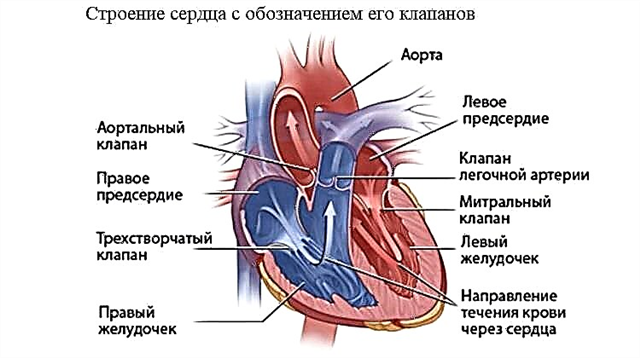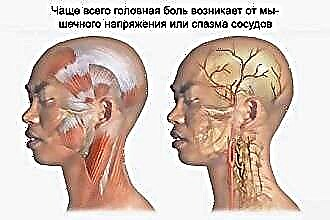The growths can be on the nose (wart) or in the nose (polyp). According to medical statistics, polyps are one of the most common complications. It occurs most often in those who suffer from chronic rhinitis. Moreover, men have a much higher risk of polyps than women. This pathology should be treated very carefully. After all, if you just ignore the growths in the nose, they can provoke further development of complications. The sense of smell will gradually be lost, and the nasal passages will also overlap. In addition, there will be a blockage of the paranasal sinuses, and this is already fraught with inflammatory processes and other troubles.
Causes of occurrence
 Polyps do not appear suddenly. They develop and grow gradually. There are 3 stages of their development:
Polyps do not appear suddenly. They develop and grow gradually. There are 3 stages of their development:
- The first - located on top of the nasal septum, neoplasms cause only minor inconveniences.
- The second - the connective tissue grows at a rapid pace, which overlaps a significant part of the nasal passages, it becomes difficult to breathe through the nose.
- The third is the most dangerous: there is a complete overlap of the nasal passages with polyps, as a result of which a person can no longer breathe through his nose.
When the body is struggling with any ailment caused by an infection, harmful microorganisms may well multiply on the mucous membrane in the nose. As a result, the top cell layer can peel off. This is usually manifested by congestion, changes in the timbre of the voice and a burning sensation in the nose.
In addition, a person begins to actively produce mucus. And if the mucous glands increase the intensity of work, this indicates the development of the inflammatory process. When treatment is started on time, recovery occurs within a week - a maximum of 10 days.
If we neglect the need for treatment and rely on "maybe it will go away by itself", the risk of local immunity disturbance and hyperfunction of the mucous membrane lining the nasal passages increases significantly. The latter will struggle to perform its function properly. Only for this she will have to increase in size. Due to the active proliferation of connective tissue, it also grows and thickens. At some point, the hypertrophied mucous membrane enters the nasal cavity. Thus, a polyp appears.
Doctors also name a number of other reasons for the occurrence of such neoplasms in adults and babies:
- various chronic inflammations;
- frequent colds and diseases of infectious origin;
- allergy to pollen of some plants, household dust and chemicals, fungal spores, pet hair, as well as chromium compounds;
- respiratory disturbances due to crooked septa inside the nose (as a result, the mucous membrane grows);
- genetic predisposition;
- pathological response of the immune system.
In addition to all of the above, polyps can form as a result of Young's syndrome, nasal mastocytosis, cystic fibrosis, and even individual intolerance to aspirin.
Symptoms
 If the lining of the nasal cavity and paranasal sinuses is inflamed for more than 3 months, the risk of polyp formation increases significantly. They can also appear due to sinusitis or chronic rhinosinusitis. The most common symptom that signals the presence of such neoplasms is persistent nasal congestion.
If the lining of the nasal cavity and paranasal sinuses is inflamed for more than 3 months, the risk of polyp formation increases significantly. They can also appear due to sinusitis or chronic rhinosinusitis. The most common symptom that signals the presence of such neoplasms is persistent nasal congestion.
Other symptoms that indicate polyps have settled somewhere in the nose include:
- Difficulty breathing. This symptom is caused by an excessive increase in the mucous membrane, which in places or completely closes the space in the nasal passages.
- Coryza with mucous or purulent discharge. If such a symptom appears, it means that a secondary infection has joined the underlying disease. In this case, the glands that produce mucus work very intensively.
- Sneezing. It is provoked by the same overgrown mucous membrane that now touches the cilia. The latter regard it as something foreign. As a result, the body tries to rid itself of this foreign body through a typical defense reaction.
- Partial or complete loss of sensitivity to odors. The size of the connective tissue increases, as a result of which the functioning of the receptors responsible for the sense of smell is impaired.
- Headache. Due to the proliferation of tissue, the nerve endings are compressed. The brain suffers from a lack of oxygen, because polyps interfere with proper breathing.
- Violations of the timbre and sound of the voice. If the air passes through the nasal passages with obstructions, the person begins to purge.
Symptoms of nasal polyposis are very similar to the common cold or allergies. If suspected colds or allergic symptoms persist for 10 days or more, you should visit an otolaryngologist.
You should immediately consult a doctor if a person's condition has deteriorated sharply, visual acuity has suddenly decreased, severe swelling around the eyes appears, or a high temperature has risen.
Diagnostic features
When a person talks in the nose for a long time, even if there are no other symptoms, this should be alarming. Of course, polyps are not the only cause of voice changes. Sinusitis, adenoids, and nasal synechiae may well be the culprits. An experienced doctor will order a rhinoscopy to check what is really going on in the nose. With this procedure, the specialist will see even the smallest growths of the mucous membrane.
 In order to find out as accurately as possible at what stage the disease is, the patient is prescribed computed tomography (CT) of the paranasal sinuses. Such a procedure must be performed without fail by those to whom the otolaryngologist has voiced the verdict - to be removed surgically. The results obtained with the help of CT scan give the doctor the opportunity to determine the volume of surgery as accurately as possible and to develop a specific tactic for eliminating the disease. If it is not possible to do a CT scan, as a last resort, you can undergo an X-ray.
In order to find out as accurately as possible at what stage the disease is, the patient is prescribed computed tomography (CT) of the paranasal sinuses. Such a procedure must be performed without fail by those to whom the otolaryngologist has voiced the verdict - to be removed surgically. The results obtained with the help of CT scan give the doctor the opportunity to determine the volume of surgery as accurately as possible and to develop a specific tactic for eliminating the disease. If it is not possible to do a CT scan, as a last resort, you can undergo an X-ray.
As auxiliary methods for making a diagnosis, doctors use microlaryngoscopy, otoscopy, pharyngoscopy, as well as bacterial culture of nasal secretions (as an option, a throat swab).
To maintain objectivity, it is necessary to take into account all the data of the general blood test (in particular, take into account the level of ESR and the degree of leukocytosis). If an allergy is found to be the cause of polyps, an allergy test should be performed to determine the allergen.
Prompt removal of growths
 If conservative treatment does not give visible results, the doctor recommends surgical removal of the neoplasm. There are several types of operations for removing nasal polyps:
If conservative treatment does not give visible results, the doctor recommends surgical removal of the neoplasm. There are several types of operations for removing nasal polyps:
- Polypotomy. This is the most popular type of surgery. Neoplasms are removed with a special cutting loop or the so-called Lange hook. The positive side of this intervention is that only one procedure is required to eliminate all polyps.
- Removal with an endoscope. This surgery involves local anesthesia. A camera is inserted through the nostril into the nasal cavity. Then a picture from it is displayed on a computer monitor. This makes it possible not only to accurately determine the size of each polyp, but also to count the number of neoplasms.During the removal process, the most important areas of the nose remain intact. No scars or scars are observed after endoscopic surgery.
- Removal by means of a shaver. This procedure gives the surgeon the opportunity to observe everything that happens in the patient's nose on a computer monitor and at the same time control directly the removal of neoplasms. To carry out such an intervention, the patient is offered a choice of local anesthesia or general anesthesia. This is one of the most sparing operations, as it preserves healthy mucous membranes as much as possible. The device specifically eliminates polyps only. The indisputable advantage of removing neoplasms with a shaver is that they almost never appear again after that.
- Removal by laser. It can even be performed on an outpatient basis. On the day on which the operation is scheduled, it is recommended to refrain from eating. After the completion of the intervention, you should visit the attending physician, because it will be necessary to monitor the condition of the mucous membrane. To prevent recurrence of polyposis after laser removal of neoplasms, the doctor recommends using special aerosols. The disadvantage of such an operation is that the opening of the nasal sinuses does not occur, which means that the removal of polyposis tissue is also not performed.
And finally
The appearance of polyps is always easier to prevent than to treat or remove them. However, for this you need to know about the preventive measures that people who are consciously related to their health should take. To protect yourself from such a nuisance as a neoplasm in the nose, you first need to treat any viral disease on time. Even the most common cold should not be left to chance. Indeed, even sluggish inflammation (a characteristic feature of chronic diseases) can serve as the basis for the occurrence of polyps.
It is important to regularly engage in nasal hygiene, periodically process and rinse the nasal passages. This recommendation is especially relevant during periods of epidemics. If you do get sick, you should see your doctor immediately. And he, based on the collected anamnesis and test results, will prescribe an adequate treatment in your case.
In general, the clinical outcome after removal of polyps is considered favorable. And if the problem was discovered on time, then a comprehensive therapeutic course, selected by an otolaryngologist, will be enough for recovery.



